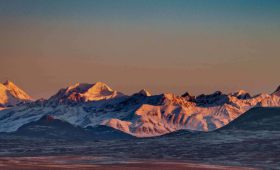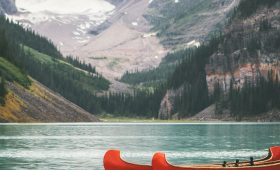Discovering Annapurna Base Camp: A Trekker’s Paradise
Introduction
Nestled in the heart of the Himalayas, Annapurna Base Camp (ABC) offers trekkers an awe-inspiring journey through diverse landscapes, rich cultures, and breathtaking mountain vistas. Unlike the more strenuous Everest Base Camp trek, the ABC trek is accessible to a wider range of adventurers, making it a favorite for those looking to experience the grandeur of the Himalayas without extreme altitude challenges. This blog will guide you through everything you need to know to embark on the unforgettable journey to Annapurna Base Camp.
The Appeal of Annapurna
The Annapurna region is renowned for its stunning beauty and biodiversity. The trek to ABC takes you through lush rhododendron forests, terraced rice paddies, and high-altitude landscapes, offering a unique blend of natural beauty and cultural richness. The journey culminates in a spectacular amphitheater of towering peaks, including Annapurna I, the 10th highest mountain in the world.
Planning Your Trip
1. Best Time to Visit:
- The best times to trek to Annapurna Base Camp are during the spring (March to May) and autumn (September to November) seasons. During these periods, the weather is stable, and the skies are clear, providing the best views of the mountains.
2. Required Permits:
- You will need two permits for the ABC trek: the Annapurna Conservation Area Permit (ACAP) and the Trekkers’ Information Management System (TIMS) card. These can be obtained in Kathmandu or Pokhara.
3. Physical Preparation:
- While the ABC trek is less demanding than the Everest Base Camp trek, it still requires a good level of fitness. Regular cardio exercises, strength training, and practice hikes will help prepare you for the trek.
The Journey Begins: Pokhara to Nayapul
Your adventure starts in Pokhara, a charming lakeside city and the gateway to the Annapurna region. From Pokhara, you’ll drive to Nayapul, the starting point of the trek.
Trekking Through the Annapurna Region
1. Tikhedhunga and Ulleri:
- The trek begins with a gentle walk through picturesque villages and terraced fields. The first major challenge is the steep ascent to Ulleri, a village perched on a hillside, offering stunning views of the surrounding valleys.
2. Ghorepani:
- The trek from Ulleri to Ghorepani takes you through lush rhododendron forests, especially vibrant in the spring. Ghorepani is famous for its sunrise viewpoint at Poon Hill, which offers panoramic views of the Annapurna and Dhaulagiri mountain ranges.
3. Tadapani and Chomrong:
- As you continue, the trail winds through dense forests and descends into the beautiful village of Chomrong, a major stop for trekkers heading to ABC. Chomrong is situated at the base of Hiunchuli and offers stunning views of Annapurna South.
4. Dovan and Deurali:
- The trek from Chomrong to Deurali passes through bamboo and rhododendron forests. The trail follows the Modi Khola River, and the scenery becomes more rugged and dramatic as you approach the higher altitudes.
5. Machapuchare Base Camp (MBC):
- Before reaching ABC, you’ll stop at Machapuchare Base Camp, named after the sacred Machapuchare (Fishtail) Mountain. MBC offers stunning views of the surrounding peaks and serves as an acclimatization stop.
6. Annapurna Base Camp:
- The final stretch from MBC to ABC is a gradual ascent through alpine meadows. Upon reaching Annapurna Base Camp, situated at 4,130 meters, you’ll be surrounded by a majestic amphitheater of towering peaks, including Annapurna I, Annapurna South, Hiunchuli, and Machapuchare. The breathtaking 360-degree panorama is a sight you’ll never forget.
Experiencing the Culture
The Annapurna region is home to diverse ethnic groups, including Gurungs and Magars, known for their warm hospitality. Along the trek, you’ll have the opportunity to experience local culture, visit traditional villages, and interact with the friendly locals. The teahouses along the route offer a glimpse into the daily lives of the mountain people and provide a cozy resting place for trekkers.
Safety and Acclimatization
While the ABC trek is less prone to altitude sickness than the Everest trek, it’s still important to acclimatize properly. Take your time, stay hydrated, and listen to your body. Most trekkers do not experience significant altitude-related issues, but it’s always better to be cautious.
Conclusion
The trek to Annapurna Base Camp is a journey through some of the most beautiful and varied landscapes in the Himalayas. From lush forests and terraced fields to high-altitude alpine terrain, every step offers a new and stunning vista. The combination of natural beauty, cultural richness, and the sense of accomplishment upon reaching ABC makes this trek a must-do for adventure enthusiasts. So pack your gear, prepare for an incredible adventure, and set off on a journey to one of the most beautiful places on Earth.




